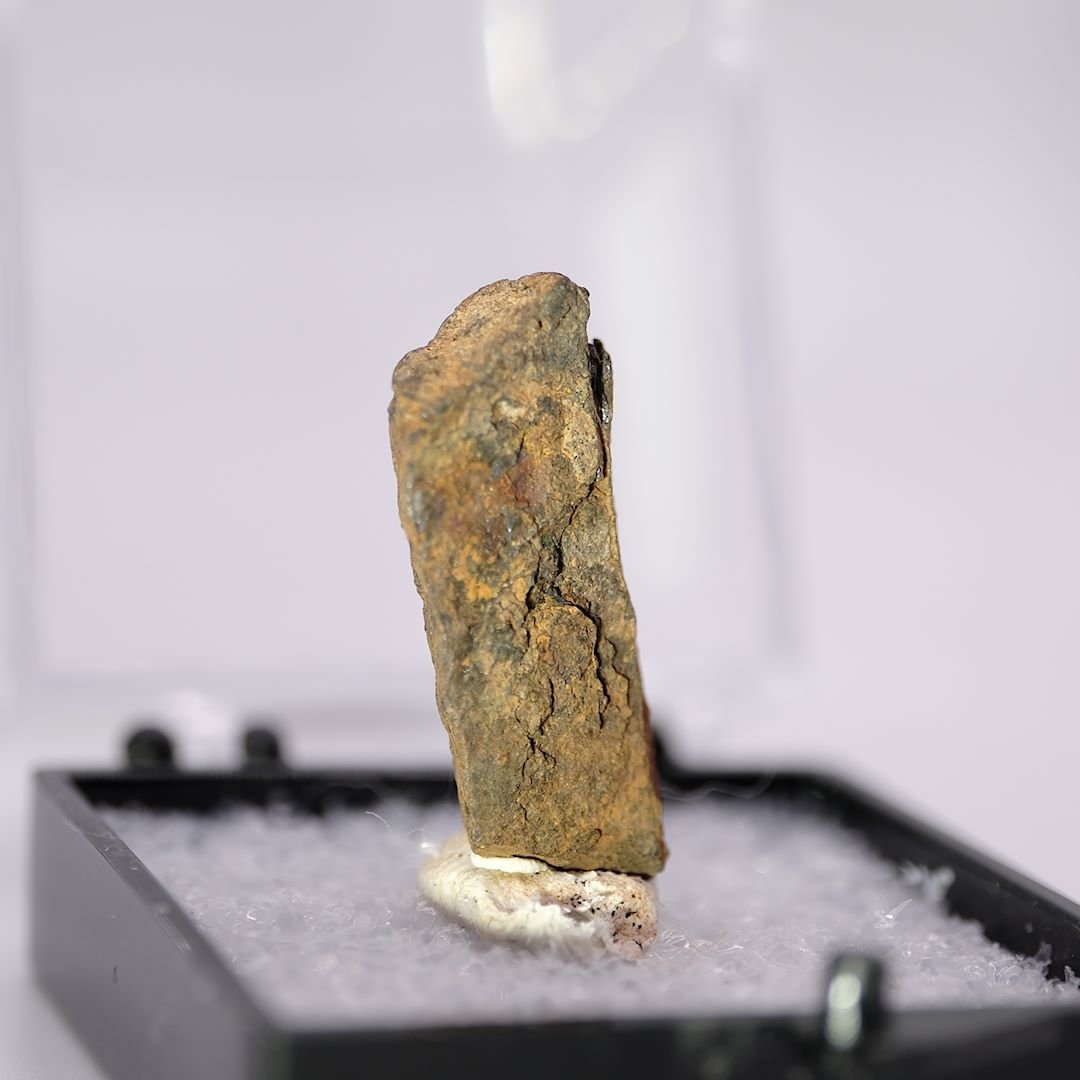 Image 1 of 2
Image 1 of 2

 Image 2 of 2
Image 2 of 2



Gibeon Iron Meteorite (Kalahari Desert, Namibia) - GIM2
About this Specimen:
Weight: 3.5g
23mm x 10mm x 4mm
———
The Gibeon Iron Meteorite fell sometime during the Prehistoric era - sometime between 1200 B.C. to 2.5million years before. It was part of a much larger meteorite that collided with another meteorite. As a result of this collision, the meteorite fragmented into smaller pieces which were then strewn haphazardly across an area over 390 kilometeres wide. It is estimated that between 100 to 150 fragments have been picked up since it was discovered (officially) in 1836. I say officially, because the local tribe near the area have been using it to make tools and such, but they never recorded their discovery. There aren't very many pieces left on site to be found today. We've even kept a piece for ourselves because it's so special and rare.
Being iron-based, this piece has already begun to oxidise and rust. Rusting is inevitable. This is why some meteorite sellers coat their meteorites in a very thick layer of epoxy - which also gives rise to the selling of fakes because it is impossible to test when coated. So, there are pros and cons to coating and not coating.
About this Specimen:
Weight: 3.5g
23mm x 10mm x 4mm
———
The Gibeon Iron Meteorite fell sometime during the Prehistoric era - sometime between 1200 B.C. to 2.5million years before. It was part of a much larger meteorite that collided with another meteorite. As a result of this collision, the meteorite fragmented into smaller pieces which were then strewn haphazardly across an area over 390 kilometeres wide. It is estimated that between 100 to 150 fragments have been picked up since it was discovered (officially) in 1836. I say officially, because the local tribe near the area have been using it to make tools and such, but they never recorded their discovery. There aren't very many pieces left on site to be found today. We've even kept a piece for ourselves because it's so special and rare.
Being iron-based, this piece has already begun to oxidise and rust. Rusting is inevitable. This is why some meteorite sellers coat their meteorites in a very thick layer of epoxy - which also gives rise to the selling of fakes because it is impossible to test when coated. So, there are pros and cons to coating and not coating.
About this Specimen:
Weight: 3.5g
23mm x 10mm x 4mm
———
The Gibeon Iron Meteorite fell sometime during the Prehistoric era - sometime between 1200 B.C. to 2.5million years before. It was part of a much larger meteorite that collided with another meteorite. As a result of this collision, the meteorite fragmented into smaller pieces which were then strewn haphazardly across an area over 390 kilometeres wide. It is estimated that between 100 to 150 fragments have been picked up since it was discovered (officially) in 1836. I say officially, because the local tribe near the area have been using it to make tools and such, but they never recorded their discovery. There aren't very many pieces left on site to be found today. We've even kept a piece for ourselves because it's so special and rare.
Being iron-based, this piece has already begun to oxidise and rust. Rusting is inevitable. This is why some meteorite sellers coat their meteorites in a very thick layer of epoxy - which also gives rise to the selling of fakes because it is impossible to test when coated. So, there are pros and cons to coating and not coating.
For every $15 spent, we will plant 1 tree to offset the carbon cost of mining, shipping and packaging crystals. These are real and natural products, and so might have some flaws or imperfections. We have done our best to pick the best pieces available, but nature is often imperfectly perfect. Therefore, please only make the purchase if you are alright with this.
You Might Also Like











